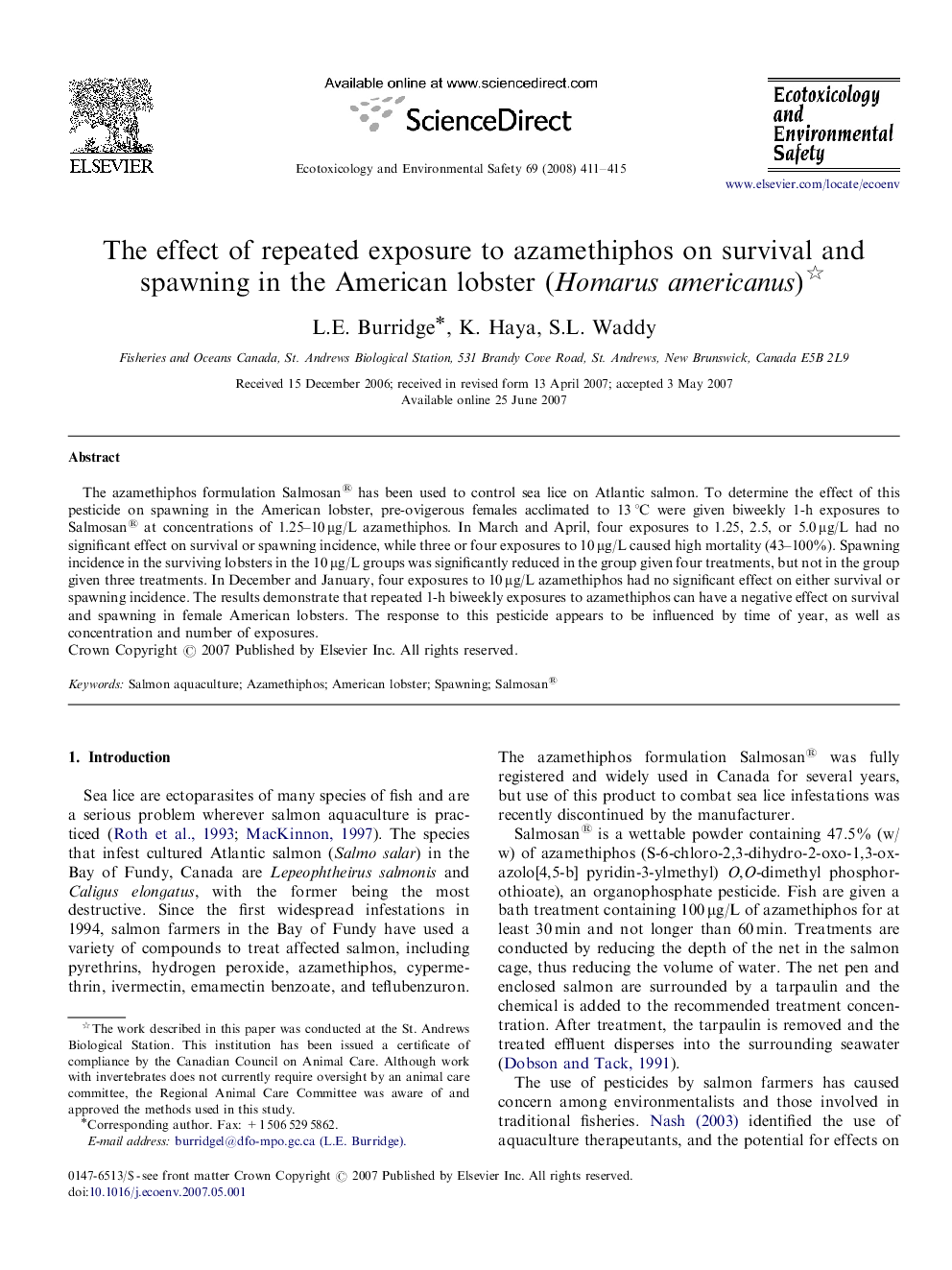| Article ID | Journal | Published Year | Pages | File Type |
|---|---|---|---|---|
| 4422290 | Ecotoxicology and Environmental Safety | 2008 | 5 Pages |
The azamethiphos formulation Salmosan® has been used to control sea lice on Atlantic salmon. To determine the effect of this pesticide on spawning in the American lobster, pre-ovigerous females acclimated to 13 °C were given biweekly 1-h exposures to Salmosan® at concentrations of 1.25–10 μg/L azamethiphos. In March and April, four exposures to 1.25, 2.5, or 5.0 μg/L had no significant effect on survival or spawning incidence, while three or four exposures to 10 μg/L caused high mortality (43–100%). Spawning incidence in the surviving lobsters in the 10 μg/L groups was significantly reduced in the group given four treatments, but not in the group given three treatments. In December and January, four exposures to 10 μg/L azamethiphos had no significant effect on either survival or spawning incidence. The results demonstrate that repeated 1-h biweekly exposures to azamethiphos can have a negative effect on survival and spawning in female American lobsters. The response to this pesticide appears to be influenced by time of year, as well as concentration and number of exposures.
